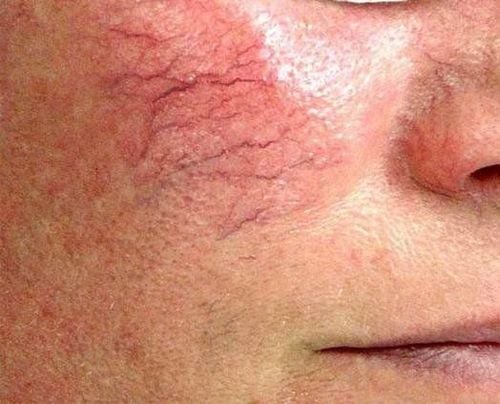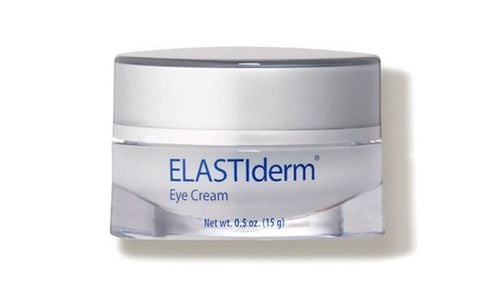This is an automatically translated article.
Melasma is a pathological disorder of pigmentation on the skin. Melasma can occur in both sexes but is more common in women. Melasma has 2 main types: Melasma patches and deep melasma, also known as endocrine melasma. Sometimes in clinical, there are cases of simultaneous infection with both deep-seated melasma and plaque melasma, called mixed melasma.
1. Endocrine Melasma
Endocrine melasma, also known as deep melasma. Melasma is caused by an endocrine disorder that leads to an imbalance of hormones in the body, which forms hyperpigmented spots on the surface of the skin. The formation of melasma is related mainly to estrogen - an important sex hormone in the body. Estrogen, in addition to its role in the body's sexual functions, has the ability to inhibit the production of MSH hormone (the hormone that stimulates the production of melanin under the skin).
Due to some reason, it causes a decrease in estrogen in the body, cannot inhibit MSH, at this time, the amount of melanin melanocytes is produced uncontrollably and then gradually pushed to the surface of the skin to form melasma and other problems. Other pigments such as freckles, age spots...
Some causes can cause endocrine disorders in the body leading to the formation of deep melasma:
Pre-menopausal women, menopause. Pregnant women, after giving birth. Due to the use of birth control pills, especially birth control pills containing progestin, melasma can appear during the period of taking the drug or 2-3 months after taking the drug. Menstrual disorders can also sometimes cause melasma. Stress, stress for a long time affecting the brain's activity will also lead to a disturbance in the production of estrogen and a number of other hormones that facilitate the formation of melasma.

Stress, căng thẳng trong một thời gian dài là điều kiện thuận lợi hình thành nám
Manifestations of endocrine melasma:
Morphology: Endocrine melasma usually appears as dark brown spots, the light can see central points that concentrate more pigmented cells, darker in color. The size of the melasma spots is not equal, large and small are mixed. Location: Deep melasma usually appears mainly symmetrically on the cheeks, sometimes appears in the temples, forehead or arms, rarely in other areas of the body. Untreated deep melasma can spread quickly to nearby locations. Clinically, endocrine melasma may be accompanied by some manifestations of endocrine disorders such as menstrual disorders, sleep disorders, fatigue, poor appetite. acne... The level of melasma on the skin can warn of an endocrine disorder in the body. How to treat hormonal melasma: Combine the treatment of the cause with the treatment of symptoms.
Treatment of the cause: The main cause of hormonal melasma is a disorder from within the body. Therefore, in the course of treatment, the first thing to do is to re-balance the hormones in the body, which can be by using drugs or supplementing through the diet as prescribed and guided by the doctor. Symptomatic treatment: Laser treatment of melasma combined with home care products to inhibit the production of melanin cells, stimulate healthy cell growth and brighten. Limit the application of peels. Have a proper diet, rest, and avoid prolonged stress.
2. Common Melasma

Da tiếp xúc nhièu với tia cực tím sẽ tăng tiết melanin đẩy lên bề mặt da làm da bị sạm đi
Different from hormonal melasma, normal melasma appears mainly due to agents from outside the body, but mainly due to each person's skin care and protection. Factors that increase the risk of melasma commonly include:
Sunlight or blue light containing UV rays: The nature of melanin is born to protect the skin. When the skin is exposed to ultraviolet rays, the body's protective reflex will increase the secretion of melanin, pushing it to the surface of the skin. These melanocytes will absorb UV rays to convert energy and reduce the impact of ultraviolet rays on the skin. The more melanin is produced, the better the protection of the skin, but conversely, due to the concentration of too much melanin to form the skin barrier, it causes the skin to darken. That is the reason why sun exposure without protection causes melasma. Improper skin care, using poor quality cosmetics, wrong skin care treatments, using too many forms of skin peeling. This is a common phenomenon that is happening at many spa salons from small to large. Hasty treatment, not understanding the root cause of melasma, for customers to use peeling cosmetics with high acid content, strong acid and repeated use leading to skin erosion, skin becomes weak. easily affected by ultraviolet rays that cause melasma or make melasma worse. Environmental pollution is not a direct factor that causes melasma, but it is inevitable that melasma in women is getting worse. Clinical manifestations of normal melasma:
Morphology: Unlike deep-seated melasma, normal melasma manifests itself in the form of plaque melasma. Melanin pigment cells do not grow concentrated in each point, but scattered on the surface of the skin, gathering in large clusters, the boundary is sometimes not clear with healthy skin. Location: Similar to deep leg melasma, normal melasma mainly appears on the cheeks, forehead, temples and sometimes on the arms (uncommon). In normal melasma, there is no accompanying manifestation of endocrine disorders in the body. There are a number of comorbidities that still show symptoms of the disorder, but not many. Conventional melasma treatment:
Use laser treatment in combination with special treatment products that are able to regenerate cells and inhibit melanin production. Minimize the methods of peeling. During the treatment, change your diet, change your skin care as well as use appropriate cosmetics, especially pay attention to sunscreen and nutrients to increase the skin's resistance. Actively protect skin when exposed to sunlight or ultraviolet light. Plaque or deep leg pigmentation, normal skin pigmentation or endocrine melasma, although not harmful to health, does not pose a risk to life, but greatly affects facial aesthetics, creating a sense of inferiority for people. suffer, especially in women. Melasma is not too difficult to treat if you choose the right treatment method and know how to take care of your skin properly.
Please dial HOTLINE for more information or register for an appointment HERE. Download MyVinmec app to make appointments faster and to manage your bookings easily.













